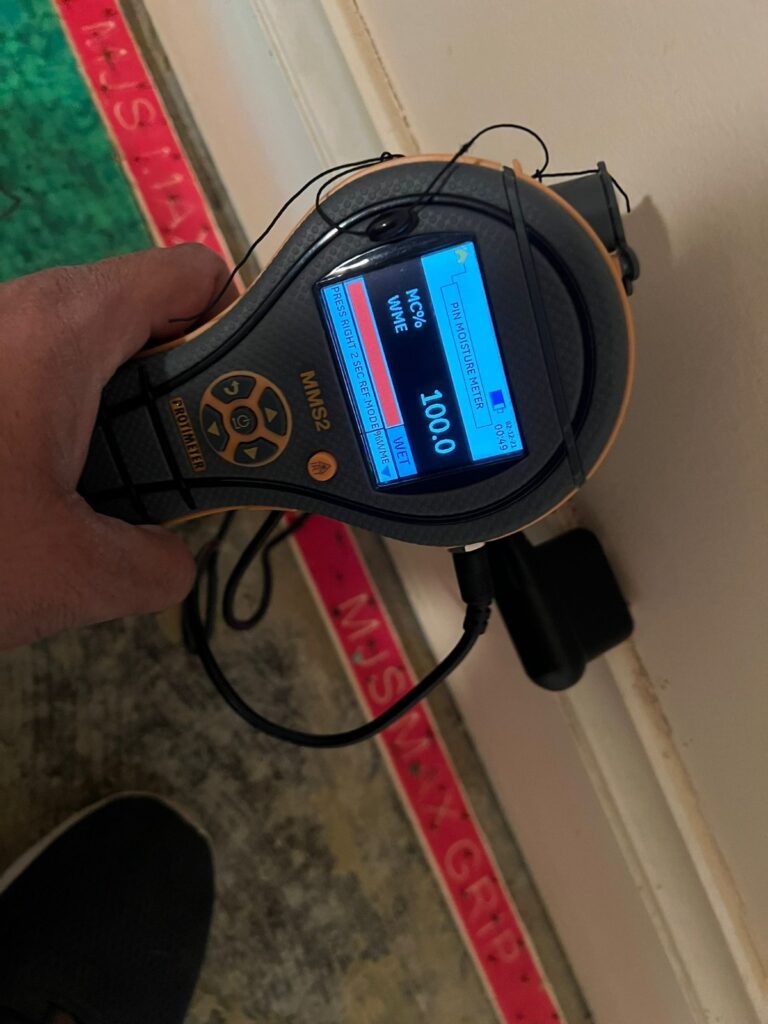Living in Perth means dealing with everything from scorching summers to winter downpours. Your ceiling cops the brunt of it all. Signs of water damage on ceiling can sneak up faster than a Fremantle Doctor, leaving you with expensive repairs if you don’t catch them early.
Whether you’re in Subiaco’s character homes or Joondalup’s newer builds, water damage doesn’t discriminate. Here’s how to spot trouble before it becomes a nightmare.

Why Ceiling Water Damage Detection Matters More Than Ever
The $15,000 Average Cost of Ignored Water Damage
According to the National Association of Home Builders, ceiling water damage repair costs have increased 23% since 2023, with complete ceiling replacement averaging $12,000-$18,000 in major metropolitan areas. The Insurance Information Institute reports that 40% of homeowners who discover ceiling water damage waited too long to act, tripling their repair costs.
Here’s what delayed response typically costs:
- Week 1: Surface repairs ($500-$1,500)
- Month 1: Structural assessment required ($2,000-$5,000)
- Month 3+: Full ceiling replacement + mold remediation ($8,000-$25,000)
Health Risks: When Water Damage Becomes Dangerous
The EPA identifies water-damaged ceilings as high-risk environments for mold development, which begins within 24-48 hours of moisture exposure. Prolonged exposure to ceiling-based mold spores causes:
- Respiratory complications (especially in children and elderly)
- Allergic reactions and skin irritation
- Chronic headaches and fatigue
- Worsened asthma symptoms
Professional mold assessment becomes mandatory when water damage exceeds 10 square feet or involves contaminated water sources.
12 Unmistakable Signs Your Ceiling Has Water Damage
Visual Warning Signs (Signs 1-4)
1. Water Stains and Discoloration Patterns
Water stains appear as brown, yellow, or rust-colored rings and patches. Unlike surface dirt, these stains have irregular edges and often feature darker outer rings where mineral deposits concentrate.
Professional tip: Fresh stains appear lighter and expand outward. Old stains develop multiple ring patterns, indicating repeated leaking episodes.
2. Peeling Paint and Bubbling Surfaces
When moisture penetrates ceiling materials, paint loses adhesion and begins bubbling or peeling in sheets. This occurs because water breaks down the bond between paint and underlying drywall or plaster.
Critical indicator: If paint peels off in large sections rather than small chips, water saturation has likely reached the ceiling substrate.
3. Ceiling Cracks and Structural Changes
Water-damaged ceilings develop distinctive crack patterns:
- Hairline cracks: Early moisture exposure
- Web-pattern cracks: Advanced water saturation
- Linear cracks along joints: Structural movement from water weight
Emergency warning: Cracks wider than 1/8 inch indicate potential structural failure requiring immediate professional assessment.
4. Sagging or Drooping Areas
Ceiling sagging occurs when water-logged materials become too heavy for support structures. Even minor sagging (1/4 inch depression) indicates significant water accumulation.
Safety alert: Evacuate the area beneath any sagging ceiling immediately. Collapse can occur without warning.
Environmental Indicators (Signs 5-8)
5. Mold Growth and Mildew Formation
Visible mold appears as:
- Black or dark green patches in corners
- Fuzzy white growth along ceiling edges
- Orange or brown spots near fixtures
Health priority: Any visible mold growth exceeding 3 feet requires professional remediation according to CDC guidelines.
6. Musty Odors and Air Quality Changes
A persistent musty smell indicates hidden mold growth or stagnant water accumulation. This odor often appears before visible signs develop.
Detection method: Professional air quality testing can identify mold spores at concentrations 50x below visible growth levels.
7. Temperature and Humidity Fluctuations
Water-damaged ceilings create localized humidity increases (65%+ in affected rooms vs. 35-45% normal range). You may notice:
- Condensation on windows in affected rooms
- Increased cooling costs
- Uncomfortable humidity levels
8. Insulation Exposure or Damage
Visible insulation through ceiling cracks or holes indicates advanced deterioration. Wet insulation loses 50% of its effectiveness and becomes a mold growth medium.
Advanced Warning Systems (Signs 9-12)
9. Active Drips and Leaks
Visible water dripping represents complete material saturation. Emergency response becomes critical because:
- Electrical hazards increase dramatically
- Structural failure risk escalates hourly
- Mold development accelerates in active moisture
10. Electrical Issues and Fixture Problems
Water and electricity create deadly combinations. Watch for:
- Flickering lights
- Electrical outlets near affected areas shorting out
- Light fixtures collecting water
- Circuit breakers tripping repeatedly
Immediate action required: Turn off electricity to affected areas and contact professionals within 2 hours.
11. Plaster Degradation
Traditional plaster ceilings show water damage through:
- Chalky white residue (efflorescence)
- Sections becoming soft to gentle pressure
- Pieces falling unexpectedly
12. Recurring Moisture Patterns
The most dangerous sign: water damage that appears to “heal” itself, then returns. This indicates:
- Intermittent leaks that worsen during weather events
- Hidden structural problems
- Multiple failure points requiring comprehensive assessment
Emergency Response: What to Do When You Discover Ceiling Water Damage
Immediate Safety Steps (First 30 Minutes)
- Ensure electrical safety: Turn off power to affected rooms at the circuit breaker
- Protect belongings: Move furniture and valuables away from damaged areas
- Contain water flow: Place buckets under active leaks
- Document everything: Take photos from multiple angles for insurance claims
- Locate water source: Check roof, plumbing, and HVAC systems for obvious failures
Critical safety note: Never touch electrical fixtures, outlets, or switches in water-affected areas.
Documentation for Insurance Claims
Insurance companies require specific documentation within 48 hours:
Temporary repairs: Receipts for emergency mitigation efforts
Photographic evidence: Before, during, and after initial response
Damage inventory: List of affected items with estimated values
Professional assessments: Contact information for contractors consulted
When to Call Professionals
If you’ve spotted multiple signs or any sagging, don’t attempt DIY repairs. Professional ceiling repair specialists understand Perth’s unique climate challenges and building standards.
Look for contractors experienced with water damage restoration in Perth conditions. They can identify hidden damage and prevent future problems.
For expert ceiling repairs and water damage assessment, contact qualified professionals who understand Perth’s specific challenges.
Our recent case Study on How GSB Flood Master Restored a Flood-Damaged Apartment in Perth in Just 48 Hours shows exactly how expert teams can transform what seems like a catastrophic situation into a manageable repair job.
